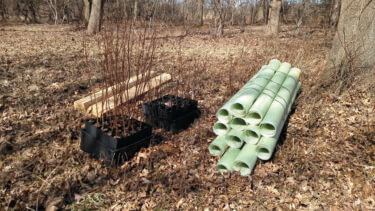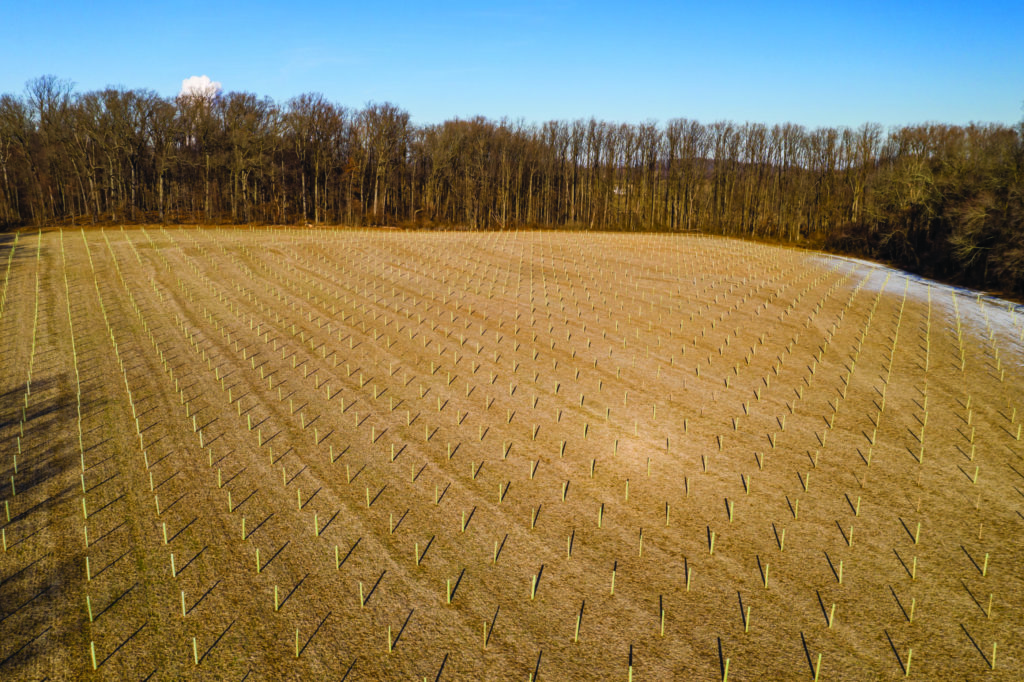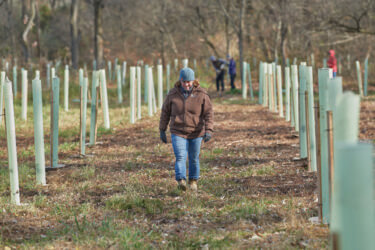planting a forest.
Planting trees is one of the most effective and cheapest ways of taking CO2 out of the atmosphere to tackle the climate crisis, according to scientists who analyzed how many more trees could be planted without encroaching on crop land or urban areas worldwide. The research was published in the journal Science last year.

Photo: Debbie Beer
As trees grow, they absorb and store the carbon dioxide emissions that are driving climate change. New research estimates that a global planting program could re-move two-thirds of all the emissions from human activities that remain in the atmosphere today.
“This quantitative evaluation shows [forest] restoration isn’t just one of our climate change solutions, it is overwhelmingly the top one,” said lead study author Tom Crowther. “What blows my mind is the scale. I thought restoration would be in the top 10, but it is overwhelmingly more powerful than all of the other climate change solutions proposed.”
In 2017, Natural Lands acquired Bryn Coed Preserve in Chester Springs, Chester County. In doing so, the organization saved one of the largest remaining unprotected swaths of land in the greater Philadelphia region from becoming a housing development. However, after decades of being farmed, the hills at Bryn Coed—which means “wooded hill” in Welsh—are far less wooded than they once were.

Drone photos taken by Mark Williams after the tree planting at Bryn Coed Preserve.
Last winter, Natural Lands planted 12,500 native trees along a 3.5-mile stretch of streams at Bryn Coed. The massive re-forestation project to convert 64 acres from marginal farmland to woods will sequester carbon for years to come and exemplifies a natural approach to mitigate the impacts of climate change. The project also offers the co-occurring benefit of improving water quality for much of our region.
Situated within the Delaware River watershed, Bryn Coed Preserve contains several headwater streams—small tributaries that carry water into Pickering Creek and on to the Schuylkill and Delaware Rivers. In fact, 17 percent of all the water flowing into Pickering Creek originates at Bryn Coed.
The headwater streams are particularly vulnerable to pollution from agricultural runoff. As storm-water flows from the land toward the streams, the 64 acres of newly planted trees will absorb pollutants, improve infiltration and recharge groundwater, and reduce erosion and flooding.

Photo: Ed Cunicelli
Funding was provided by the PA Department of Conservation and Natural Resources’ Forest Riparian Buffer Grant Program and the PA Department of Environmental Protection.
“This is one of the larger tree-planting projects that DCNR has been involved with,” said John Nissen, service forester with the Bureau of Forestry. “Personally, it’s the largest riparian project in my coverage area since I have been with DCNR.”
